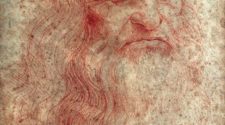12 years ago I purchased my Telescope for my mobile observatory with no previous knowledge of Telescopes. I asked around on various forums and got excellent help from Dr. Yigal Patel the owner of the Cosmos store in Ramat Gan.
I chose a telescope that was light enough for me to set up myself in various locations, sometimes several time a night, yet as large as I could handle in order to maximize my viewing experience. As a then inexperienced astronomer with no mentor available in Eilat I chose a “go-to” scope that after a simple setup would slew itself to the object i chose either with the handset or from a connection to a computer. Another wonderful function of this scope is it’s tracking ability. In my case, I show the night sky to large numbers of people, the tracking is a life saver. Anyone who has viewed the moon or a planet through a simply mounted scope will appreciate how quickly the earth moves and the object you have chosen drifts rapidly from the eyepiece. The tracking also allows me to view at higher magnifications, as the drift is also much faster at a higher magnifications.
Problems I have much praise for the LX200 but my model has a few engineering faults, some of which can be dealt with with after market products. The screws of the tripod are screwed into cast metal and the treads stripped over to little time. The Altitude clutch and tightening screw are also made of incompatable materials that stripped the threads.
After Market Products
The LX200 arrives with everything you need to get out and to view. There are a few things that need upgrading for comfort Most connections of parts on the LX22 require the use of allen wrenches. A firm called “Bob’s Knobs” markets knobs for collimation (lining up the mirrors) which does not need to be done often but is much easier with the knobs rather then with the allen keys. The knobbed screws for the focuser are available from Scopestuff. After market kits for the clutch and other things are available from Peterson Engineering
What would I do differently?
The Lx200 is on an alt-azimuth mount which is excellent for visual astronomy. My next scope will likely be on a German equatorial mount (GEM) . the GEM is better for photography because it rotates as do celestial objects as well as following objects. My main reason for preferring the GEM is that, although the whole assembly is heavier, the components are individually lighter. This would allow me to mount a larger Optical Tube Assembly (OTA) even a 14″ that I could handle alone.
The Great Robbery.
I returned late one night and foolishly left my parts case in my vehicle. A thief saw a suitcase in the car and made off with it. The contents of the suit case were of no value to the thief who likely trashed them. I lost my favorite eyepieces, the macro focuser of the scope, the diagonal and some filters as well as the finder scope and a green laser and it’s mount. In order to continue working I ordered a new diagonal and a “visual back” for the Schmidt cassegrain telescope as well as 2 good lenses, a wide angle 26mm Meade Series 5000 Plossl Eyepiece and a 8mm eyepiece. Along with a 14mm eyepiece that wasn’t in my car I have the eyepieces I need. The new Meade eyepiece is amazing with outstanding contrast, the theft was almost worthwhile for this knowledge and experience. I haven’t yet replaced the finder scope, instead of the finder scope I have mounted green laser that I align with the scope and use for pinpointing stars. If I attend star parties I will need to get a finder scope as the green laser can make me unpopular. I also have not replaced the microfocuser and focus with the mirror and suffer a bit from the mirror flop that the SCT’s are famous for.
Specifications for Meade 8″ LX200 GPS SMT Telescope:
Optical Design:
Schmidt-Cassegrain
Clear Aperture:
203mm
Primary Mirror Diameter:
209.6mm (8.25″)
Focal Length, Focal Ratio:
2000mm f/10
Near Focus (approx.):
25 ft.
Resolving Power (arc secs.):
0.56
Optical Coatings:
MgF2 on correcting plate (2-sides); standard aluminum on primary & secondary mirrors
Ultra-High Transmission Coatings:
optional at time of purchase
Limiting Visual Magnitude (approx.)14.0:
Limiting Photographic Magnitude (approx.):
16.5
Image Scale (degs./inch):
0.72 (8″ f/10)
Maximum Practical Visual Power:
600X
35mm Angular Film Coverage:
0.68° x 0.97°
Optical Tube Dimensions (dia. x length):
9.1″ x 16.75″
Secondary Mirror Obstruction (dia.; %):
3.0″-14.1%
Telescope Mounting:
heavy-duty fork type; double tine
Setting Circle Diameters:
Dec: 5″; RA: 8.75″
RA Motor Drive Systems:
185-speed, microprocessor-controlled, 12v DC servo motor; 5.75″ LX worm gear with Smart Drive software
Hemispheres of Operation:
North and South, automatically selected by GPS input or by user override
Declination Control System:
185-speed, microprocessor-controlled, 12v DC servo motor; 5.75″ LX worm gear with Smart Drive software
Primary Mirror Lock:
included (progressive tension)
GPS Alignment:
included (16-channel GPS receiver, electronic sensors for true-level and North, with magnetic declination compensation)
GO TO Pointing Precision (approx.):
2-arc mins.
Pointing Precision, High-Precision Mode:
1-arc min.
Slow-Motion Controls:
manual and electric, RA and Dec.
Bearings:
Dec: 3 x 1.83″ dia. ball bearings; RA: 1 x 4″ dia. and 1 x 2.25″ dia. ball bearings
Autostar Hand Controller:
Atmel 89C451 & PIC16C57 microcontrollers; 2 line x 16 alphanumeric character display; 20-button keypad, red LED backlit
Main Telescope Controller:
distributed intelligence architecture using 8 networked microcontrollers (Motorola 68HC11, Atmel 89C451, 3 x PIC16C62, 2 x PIC16C54, Sony digital signal processor); 3.5-Megabyte flash memory (field reprogrammable), 32K RAM
Batteries (user-supplied):
8 x C-cells
Battery
Life (approx.):
20 hrs.
Onboard Celestial Object Database:
147,541 objects
Slew Speeds:
RA and Dec: 0.01x to 1.0x sidereal, variable in 0.01x increments; 2x, 8x, 16x, 64x, 128x sidereal; 1°/sec. to 8°/sec., variable in 0.1° increments
Tracking Rates:
sidereal, lunar, or custom-selected from 2000 incremental rates
Tube Body:
aluminum
Mount
Casting
:
aluminum
Primary, Secondary Mirror:
Pyrex® glass
Correcting Plate/Lens:
clear float glass
Telescope Dimensions, swung down:
9.25″ x 17″ x 24.75″
Shipping Carton Dimensions:
31″ x 22″ x 14″
Total Net Telescope Weight:
73 lbs
Heaviest Sub-Section for Field Assembly 45 lbs.:
Total Shipping Weight (approx.):
94 lbs.
1220 Field De-rotater:
optional
Equatorial
Wedge Latitude Range
:
23° to 64°
Field Tripod Height:
30″ to 44″ variable
This entry was posted in
astronomy
,
eilat
,
equipment
,
ground-based astronomical telescopes.
,
LX200 gps
,
observatories
,
Things to do in eilat
,
things to do in the Arava
,
Things to do with Children








